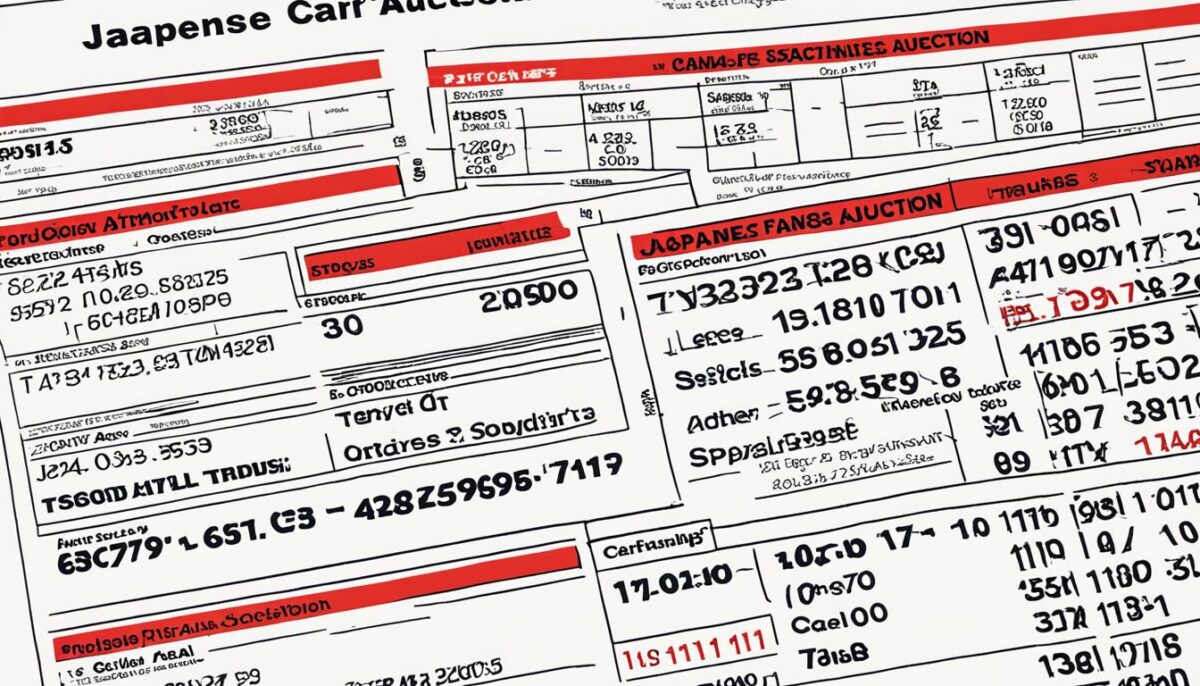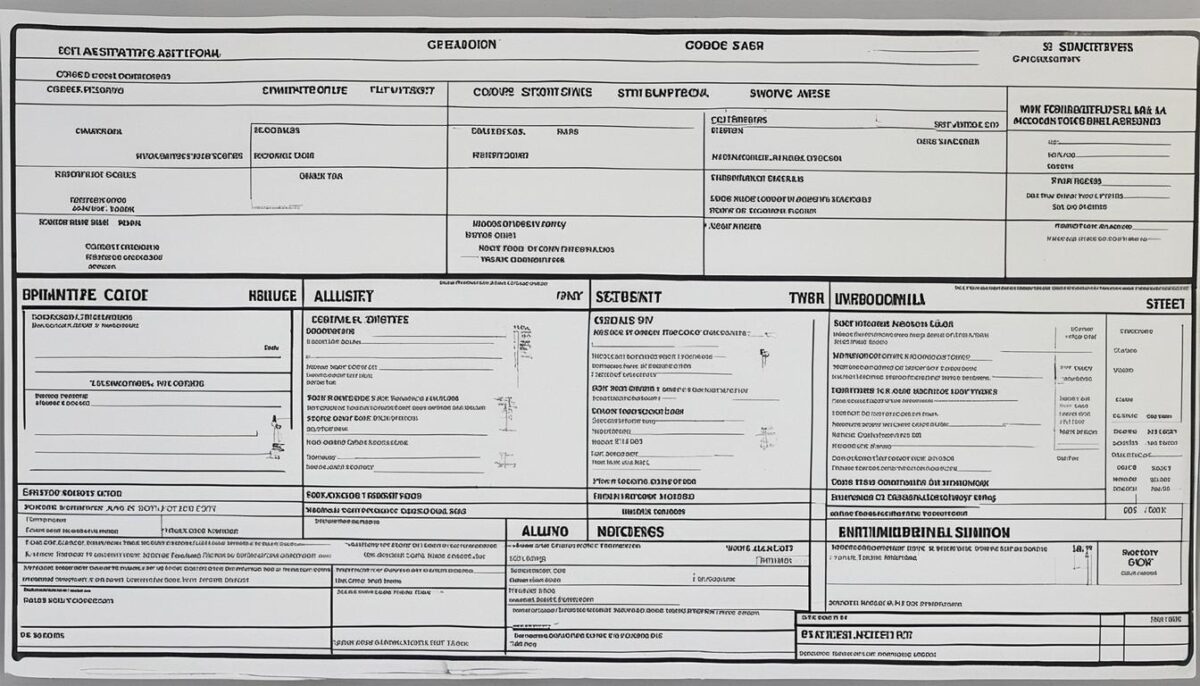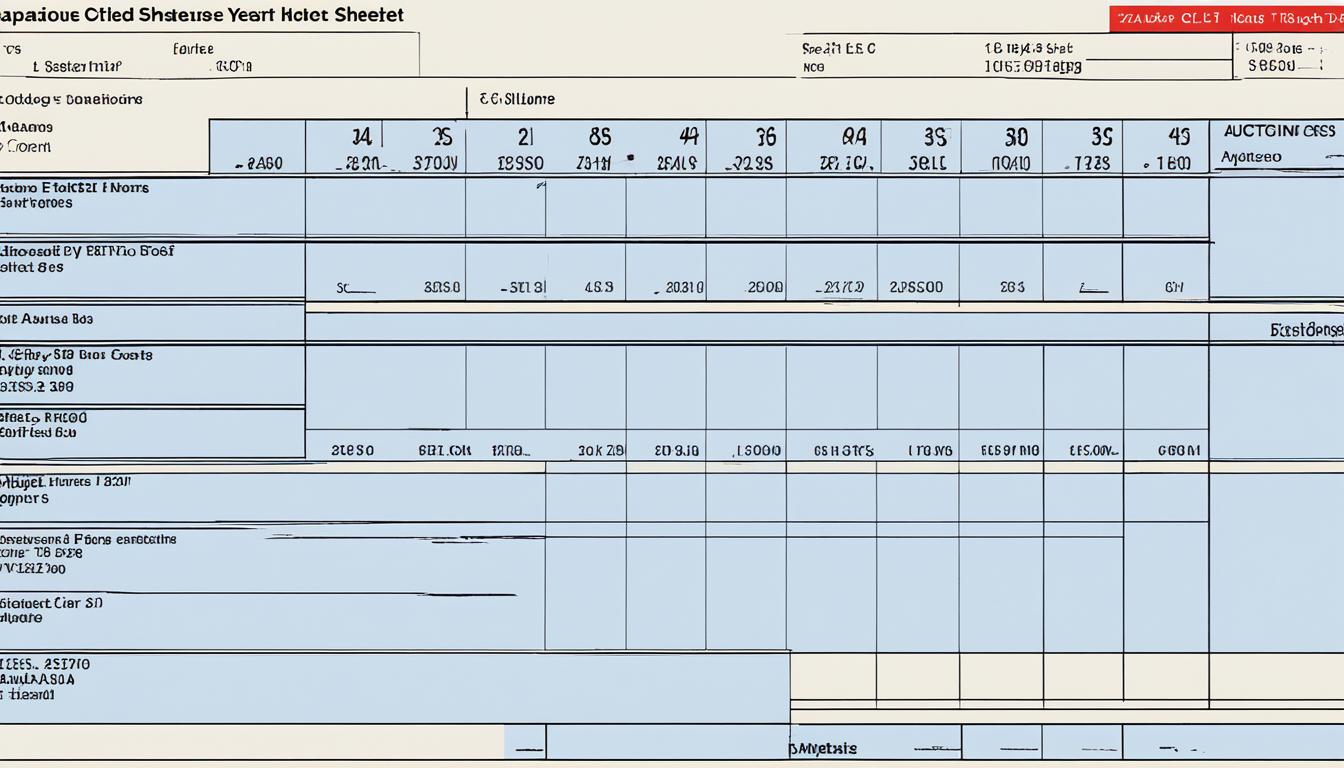How To Read Japanese Car Auction Sheet
The auction grade and overall condition section of the Japanese car auction sheet provides important insights into the condition of the vehicle. It is essential to understand how to interpret the auction grade to make informed decisions. The auction grade ranges from 1 to 6, with 1 being the lowest and 6 being the highest. The grade reflects the overall condition of the car, including its mechanical and aesthetic aspects.
The auction grade is typically accompanied by a brief description or shorthand notes that provide additional details about the vehicle’s condition. These details can include information on any accident history, repairs, or modifications. Therefore, it is crucial to carefully read and understand these descriptions to get a comprehensive view of the car’s condition.
When analyzing the overall condition of the vehicle, it’s important to consider not only the auction grade but also other significant factors. One such factor is the accident history of the car. The auction sheet may indicate if the vehicle has been involved in any accidents. This information is crucial as it can affect the car’s structural integrity and long-term reliability.
Mileage verification is another essential aspect to consider. The auction sheet may provide details about the vehicle’s mileage and whether it has been verified or not. Accurate mileage information is vital for determining the car’s mechanical wear and tear, as well as its potential lifespan.
By carefully analyzing the auction grade, accident history, and mileage verification, you can gain a better understanding of the overall condition of the car and make a more informed decision.
In the next section, we will delve deeper into the Japanese car auction sheet and how to interpret the detailed vehicle specifications and options. Understanding this section is crucial for assessing the suitability of the vehicle for your needs.
Understanding Vehicle Specifications and Options
This section of the auction sheet provides valuable information about the vehicle’s specifications and options. It is important to understand how to interpret the Japanese language abbreviations commonly used in this section to make an informed decision about the car you are considering.
Japanese car auction sheets often include abbreviations for important features such as engine type, transmission, and drivetrain. By familiarizing yourself with these abbreviations, you can gain a clearer understanding of the vehicle’s capabilities and suitability for your needs.
For example, the abbreviation “AT” stands for automatic transmission, while “MT” refers to manual transmission. Similarly, “2WD” denotes a two-wheel drive vehicle, while “4WD” indicates a four-wheel drive vehicle. By decoding these abbreviations, you can quickly determine the vehicle’s driving dynamics and capabilities.
Additionally, the auction sheet may provide information about specific options and features available in the vehicle. These options can vary widely, ranging from advanced safety features to luxurious upgrades and entertainment systems. Understanding the options available in a vehicle can help you assess its value and desirability.
To illustrate, let’s take a look at an example of a Japanese car auction sheet:

Sample Vehicle Specifications and Options
| Abbreviation | Description |
|---|---|
| AT | Automatic Transmission |
| MT | Manual Transmission |
| 2WD | Two-Wheel Drive |
| 4WD | Four-Wheel Drive |
| ABS | Anti-lock Braking System |
| A/C | Air Conditioning |
| PS | Power Steering |
| PW | Power Windows |
By referring to the table above and the auction sheet, you can easily identify the vehicle’s transmission type, drive system, and other important options. This information allows you to evaluate whether the vehicle meets your specific requirements and preferences.
Decoding the vehicle specifications and options section of the Japanese car auction sheet is essential for making an informed buying decision. By understanding the abbreviations and options listed, you can assess the vehicle’s capabilities, value, and desirability. Take the time to familiarize yourself with the common abbreviations, and refer to the auction sheet to gain valuable insights into the vehicle’s features and specifications.
Analyzing Exterior and Interior Condition
When assessing a vehicle for purchase at a Japanese car auction, it’s essential to thoroughly examine the exterior and interior condition. The detailed condition report section of the Japanese car auction sheet provides valuable information that can help you make an informed decision.
Evaluating the Exterior Condition
Inspecting the exterior condition is crucial as it gives insight into the overall cosmetic state of the vehicle. The auction sheet uses various codes and descriptions to assess the body, paint, and overall cleanliness. Let’s delve into the key aspects to focus on:
- Body Condition: Look for any signs of dents, scratches, or rust. The auction sheet uses codes such as “A1” for minor scratches and “E” for large dents to indicate the extent of damage.
- Paint Condition: Check for any paint fading or mismatched sections. The auction sheet may use codes like “P1” for minor paint issues and “P4” for major repainting to highlight any paint-related concerns.
- Overall Cleanliness: Assess the cleanliness of the vehicle’s exterior, including the windows, mirrors, and lights. The auction sheet may indicate the cleanliness level with codes such as “U1” for a clean exterior and “U4” for a dirty or neglected exterior.
Assessing the Interior Condition
The interior condition is equally important when evaluating a Japanese car at auction. It offers insights into the level of care and maintenance provided by the previous owner. Take note of the following factors:
- Upholstery: Examine the condition of the seats, carpets, and headliner for any tears, stains, or excessive wear. Codes like “B” for stains and “F” for damaged upholstery can help you assess the severity of issues.
- Dashboard and Controls: Check the functionality of the dashboard, including all indicators, buttons, and controls. Look for signs of wear or malfunction. These details may not be explicitly mentioned in the auction sheet but should be personally inspected during a physical inspection.
- Cleanliness and Odor: Consider the cleanliness and overall odor of the interior. Look for signs of smoking, pets, or other odors that may affect your comfort and satisfaction with the vehicle.
By carefully analyzing the exterior and interior condition described in the Japanese car auction sheet, you can make a more informed decision before placing your bid. Remember to consider these factors alongside other sections of the auction sheet, such as the overall grade and mechanical condition, to gain a comprehensive understanding of the vehicle’s condition.

| Exterior Condition Codes | Meaning |
|---|---|
| A1 | Minor scratches |
| E | Large dents |
| P1 | Minor paint issues |
| P4 | Major repainting |
| U1 | Clean exterior |
| U4 | Dirty or neglected exterior |
| Interior Condition Codes | Meaning |
|---|---|
| B | Stains |
| F | Damaged upholstery |
Examining Mechanical Condition and Service History
In this section of the Japanese car auction sheet, we delve into the critical aspects of the vehicle’s mechanical condition and service history. By analyzing the maintenance codes and notes, you can gain valuable insights into the maintenance records and determine the overall health of the car.
Interpreting Maintenance Codes
The auction sheet provides maintenance codes that give an overview of the vehicle’s past servicing. These codes indicate the type of maintenance performed, such as regular oil changes, brake replacements, or major repairs. By understanding these codes, you can assess the level of care the car has received and identify any potential red flags. For example, a car with consistent maintenance history signals responsible ownership and often implies better mechanical condition.
Assessing Service History
Service history is an essential factor when considering a used Japanese car. By reviewing the auction sheet’s notes, you can gain insights into the car’s service records, including the date of the most recent service, the mileage at the time, and the nature of the work performed. This information allows you to evaluate the vehicle’s reliability and understand any recurring issues or maintenance needs that may require your attention.
“The service history of a car is like its medical records. It reveals a lot about its overall health and can help predict future maintenance needs.”
Furthermore, the auction sheet may include details of repairs conducted by authorized dealerships or certified mechanics. This information gives you confidence in the quality of the repairs and suggests that the necessary work has been carried out by professionals.
Importance of Auction House Inspection Reports
Additionally, many auction houses conduct independent inspections on the vehicles they sell. These inspection reports are often available on the auction sheet or can be requested separately. The inspection report provides comprehensive details about the mechanical condition of the car, including engine and transmission performance, suspension, brakes, and more. This information adds another layer of transparency and enables you to make a well-informed decision about the mechanical condition of the vehicle.
Common Maintenance Codes
| Code | Description | Meaning |
|---|---|---|
| M1 | Regular maintenance | Performed on schedule |
| M2 | Minor repair | Issues addressed promptly |
| M3 | Major repair | Significant work completed |
| M4 | Recall inspection | Checked for manufacturer recalls |
| M5 | Modified parts | Aftermarket parts installed |
Note: Please refer to the auction house’s specific code guide for a comprehensive understanding of all maintenance codes used.
By carefully evaluating the mechanical condition and service history outlined in the Japanese car auction sheet, you can make informed decisions and bid with confidence. Understanding the maintenance codes, reviewing the service history, and acknowledging the significance of auction house inspection reports will help you assess the vehicle’s overall condition and determine its suitability for your needs.
Evaluating Market Value and Potential Risks
When participating in a Japanese car auction, it’s crucial to have a comprehensive understanding of how to evaluate the market value of a vehicle based on the information provided in the auction sheet. This knowledge will empower you to make informed bidding decisions and avoid overpaying or underestimating a car’s worth. In this section, we will explore the factors that can influence the pricing of a vehicle in a Japanese car auction.
Factors Affecting Market Value
The market value of a car in a Japanese car auction can be influenced by various factors. One significant factor is the popularity of the car model. Vehicles that are in high demand tend to attract more bidders, which can drive up the final selling price. On the other hand, less popular models may have lower competition, potentially resulting in a lower market value.
The condition of the vehicle plays a vital role in determining its market value. The Japanese car auction sheet provides detailed information about the overall condition of the car, including its exterior and interior condition. Cars in excellent condition are likely to have a higher market value compared to those with visible signs of wear and tear.
Mileage is another crucial factor to consider when evaluating market value. Lower mileage is generally preferred, as it implies less wear and tear on the car and can contribute to a higher market value. Cars with unusually high mileage may have a lower market value, as potential buyers might perceive them as being more prone to mechanical issues.
Additionally, the demand for a particular vehicle model can affect its market value. If a particular car model is currently in high demand, it may command a higher price at auction. Conversely, if there is limited interest in a specific model, it may have a lower market value.
Potential Risks in Japanese Car Auctions
While Japanese car auctions offer numerous opportunities to find quality vehicles at competitive prices, it’s essential to be aware of potential risks involved in the process. These risks can impact the overall value and condition of the car you are considering. Some common risks to watch out for include:
- Hidden Damage: Although the auction sheet provides information about the condition of the car, there may be hidden damage that is not easily detectable from the provided descriptions or photographs. It’s crucial to carefully review the auction sheet and consider conducting a professional inspection before placing a bid.
- Unverified Mileage: While the auction sheet indicates the mileage of the vehicle, it’s important to note that there is a risk of mileage tampering or inaccurate recording. It is advisable to check the vehicle’s odometer and consider using the services of a mileage verification company for added assurance.
- Limited Warranty: Most vehicles sold at Japanese car auctions are sold on an “as-is” basis, meaning there is no warranty or guarantee provided by the auction house. This lack of warranty coverage can expose buyers to potential repair costs and financial risks.
- Competition and Bidding Strategies: Japanese car auctions can be highly competitive, with multiple buyers vying for the same vehicles. It’s essential to have a well-defined bidding strategy and set a budget to avoid getting caught up in bidding wars and potentially overpaying for a vehicle.
By understanding these potential risks and conducting thorough research and due diligence, you can minimize the impact of these risks and make more informed decisions when participating in a Japanese car auction.
Next, we will share valuable tips for successful bidding at a Japanese car auction, helping you navigate the auction process with confidence and increase your chances of securing a desirable vehicle.
Tips for Successful Bidding at a Japanese Car Auction
When it comes to bidding at a Japanese car auction, preparation is key. Here are some valuable tips to help you navigate the auction process confidently and increase your chances of successful bidding.
First and foremost, it’s important to set a budget before participating in any auction. Determine the maximum amount you are willing to spend on a vehicle, taking into account additional costs such as import fees and transportation. This will help you avoid overspending and ensure a more controlled bidding experience.
Thorough research is another crucial aspect of successful bidding. Familiarize yourself with the current market value of the vehicles you are interested in, keeping in mind factors such as model, condition, mileage, and demand. This will enable you to make informed decisions and identify undervalued gems.
Utilizing online auction platforms can also enhance your bidding experience. These platforms provide convenient access to a wide range of vehicles, allowing you to browse through auctions and participate from the comfort of your own home. Take advantage of the various search filters and tools available to narrow down your options and find the perfect vehicle.
Finally, employing effective bidding strategies can significantly improve your chances of success. Avoid bidding impulsively and be patient. Start with lower bids and gradually increase your offers if necessary. It’s important to remain disciplined and not get caught up in bidding wars. Remember, there will always be more auctions and opportunities in the future.
By following these tips for successful bidding at a Japanese car auction, you can approach the process with confidence and increase your chances of securing a desired vehicle at a favorable price.


No responses yet